दिए गए परिपथ आरेख में, निवेश वोल्टता (Vi)20V,VBE=0 तथा VCE=0 है | IB,IC और β के मान होंगे
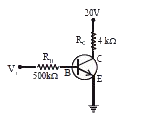
IB=40μA,IC=10mA,β=250
IB=25μA,IC=5mA,β=200
IB=20μA,IC=5mA,β=250
IB=40μA,IC=5mA,β=125
The correct Answer is:D
Step by step video & image solution for दिए गए परिपथ आरेख में, निवेश वोल्टता (V_(i)) 20 V, V_(BE) = 0 तथा V_(CE) = 0 है | I_(B),I_(C) और beta के मान होंगे by Physics experts to help you in doubts & scoring excellent marks in Class 12 exams.
Updated on:21/07/2023Topper's Solved these Questions
- अर्द्धचालक तथा अंकीय इलेक्ट्रॉनिक्स BOOK - ALLEN HINDICHAPTER - अर्द्धचालक तथा अंकीय इलेक्ट्रॉनिक्स EXERCISE - EXERCISE-III (Analytical Questions)
35 Videos
- अर्द्धचालक तथा अंकीय इलेक्ट्रॉनिक्स BOOK - ALLEN HINDICHAPTER - अर्द्धचालक तथा अंकीय इलेक्ट्रॉनिक्स EXERCISE - EXERCISE-IV (Assertion & Reason)
28 Videos
- अर्द्धचालक तथा अंकीय इलेक्ट्रॉनिक्स BOOK - ALLEN HINDICHAPTER - अर्द्धचालक तथा अंकीय इलेक्ट्रॉनिक्स EXERCISE - EXERCISE-II (Previous Year Questions)AIIMS 2017
2 Videos
- ऊष्मीय भौतिकी BOOK - ALLEN HINDICHAPTER - ऊष्मीय भौतिकी EXERCISE - EXERCISE-IV Assertion & Reason
63 Videos
Similar Questions
एक विधुत क्षेत्र एक अर्धचालक पर अनुप्रयुक्त होता है। माना आवेश वाहकों की संख्या n है और औसत अपवाह चाल v है। यदि तापमान बढ़ाया जाता है, तब:
View Solutionकथन : सामान्यत: अर्द्धचालक ओम के नियम का पालन नहीं करते है।
कारण : विद्युत धारा आवेश वाहकों के प्रवाह की दर से ज्ञज्ञत करते है।
View Solutionउभयनिष्ठ उत्सर्जक विन्यास में संयोजित एक NPN ट्रांजिस्टर चित्र में प्रदर्शित है। यदि R1=8.6KΩ,R2=100Ω,VBE=0.7V,β=100 हो तो VCE का मान होगा :-

View Solutionकथन : द्रवों में सामान्यतया ठोसों की तुलना में अधिक प्रसार होता है।
कारण : द्रवों में अन्तराण्विक बल ठोसों की तुलना में कमजोर होते है।
View SolutionIn the following common emitter circuit if beta=100, V_(CE)=7 V, V_(BE) =Negligible, R_(C)=2 kOmega then I_(B)=?
View SolutionIn the circuit shown in the figure, the input voltage Vi is 20V,VBE=0 and VCE=0. The values of IB,IC and β are given by:
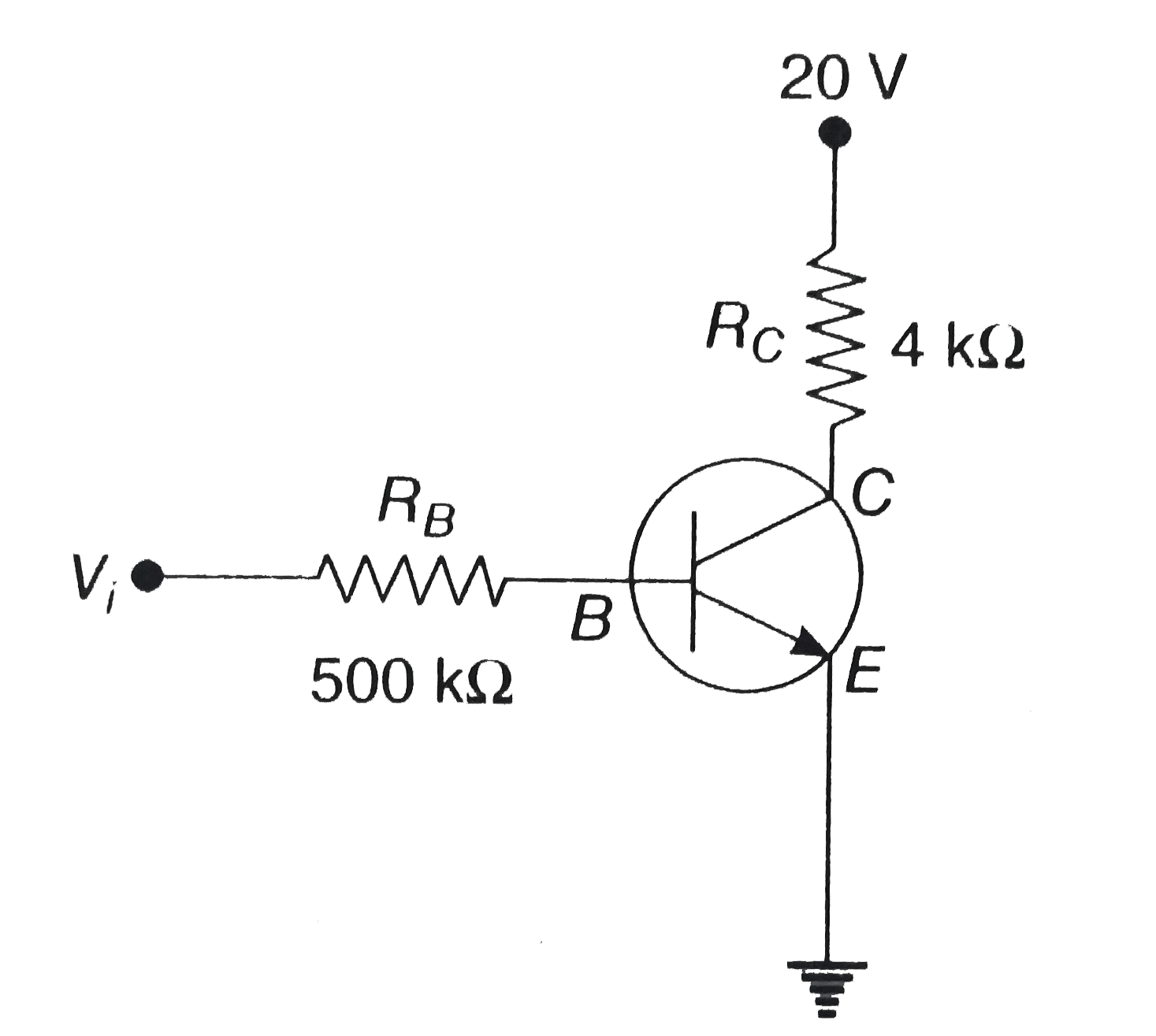
View SolutionIn the circuit Fig. the value of beta is 200. Find I_(B), V_(CE), V_(BE) and V_(BC) , when I_(C)=2.5mA . The transistor is in active, cut off or saturation state.
View SolutionIn the circuit shown in Fig. when the input voltage of the base resistance is 10V, V_(be) is zero and V_(ce) is also zero. Find the values of I_, I_ and beta .
View SolutionFor the transistor circuit shown in figure , evaluate VE,RBandRE. Given IC=1mA,
VCE=3V,VBE=0.5V,VC=12Vandβ=1000
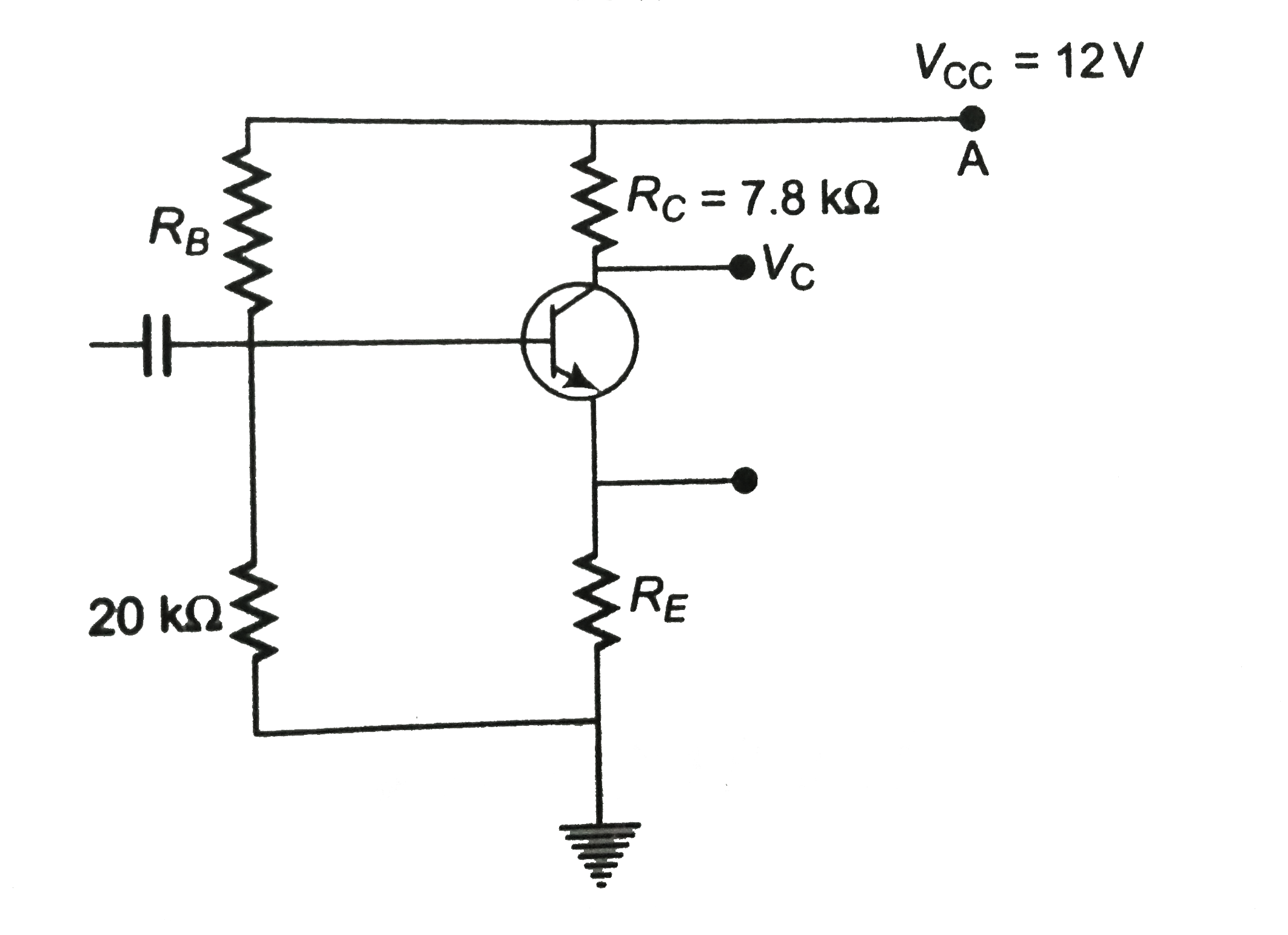
View SolutionIn the figure shown, i1=10e2tA , i2=4A and Vc=3e−2tV Determine
(a) iL and VL
(b) Vac , Vab and Vcd

View SolutionIn the accompanying circuit (Fig. 5.9) the value of beta is 100 . Find I_(B),V_(CE),V_(CE) and V_(BC) , when I_(C) =1.5 mA . Is the transistor in active, cut-off or saturation state ?
View SolutionIn the circuit shown in the figure, the input voltage V_(i) is 20V, V_(BE)=0 and V_(CE) = 0 . The values of I_(B) , I_(C) and beta are given by
View SolutionA transistor is connected in CE configuration. In the collector circuit VC.C=8V,RC=800Ω. If the voltage drop across RCis 0.5 V and α=0.96, then IC,VCEandIB will be
View SolutionIn the circuit shows in the figure, the input voltage
Vi is 20 V, VBE=0 and VCE=0. The values of lB,lC and β are given by
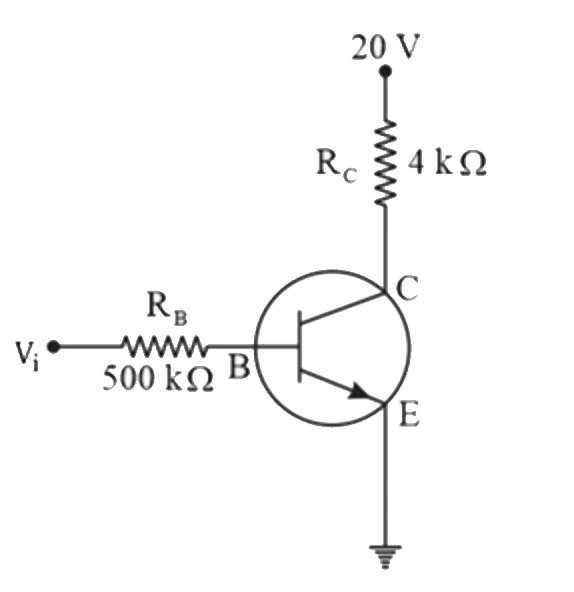
View Solutionचित्र में दिखाए परिपथ में β का मान 100 है। जब IC=1.5mA हो, तो (a) IB,(b) VCE, (c ) VBE और (d) VBC निकालें। क्या ट्रांजिस्टर सक्रीय अवस्था में है या अंतक या सतृप्ति अवस्था में ?
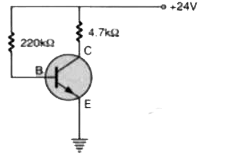
View Solution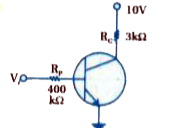
In the circuit shown in figure, when the input voltage of the base resistance is 10V, VBE is zero and VCE is also zero. Find the values of IB,ICandβ.
View Solution
